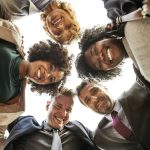Securing a USA Tourist Visa is your first step toward exploring iconic landmarks, vibrant cities, and breathtaking landscapes. Understanding the process—from choosing the right visa type to preparing for the interview—can make your application smoother and boost your chances of success. Whether you’re planning a family visit or a cultural adventure, this guide provides essential insights to simplify your journey and help you prepare with confidence.
Understanding the USA Tourist Visa and Its Application Process
The USA Tourist Visa, a nonimmigrant visa commonly applied under the B-1, B-2, or B-1/B-2 categories, facilitates temporary visits to the United States for business, tourism, or a combination of both purposes. Before diving into how to apply, it’s essential to recognize that the B-2 visa is specifically for tourism-related activities. These include visiting family, social or cultural events, and even short recreational courses that don’t count for academic credit. For a more comprehensive explanation and support, https://visa-b2.com/en/ serves as an invaluable resource guiding applicants through this process.
In parallel : Top UK Destinations for an Immersive Journey into the History of British Printing
Key Eligibility Requirements and Necessary Documentation
To qualify, applicants need to meet a set of criteria tailored toward their travel purpose. A valid passport that remains effective for at least six months beyond your intended stay in the U.S. is mandatory unless specific agreements between your home country and the U.S. exempt this rule. Additionally, you must demonstrate the financial capacity to sustain your trip and provide clear evidence of intent to return home. This often means having documents like:
- Proof of ties to your home country (e.g., employment, property ownership, or school enrollment).
- A detailed travel itinerary showing your trip’s purpose and planned activities.
- Bank statements or pay slips verifying your financial standing.
When submitting these documents, remember they need to convincingly address two primary concerns: why you wish to visit the U.S. and why you will leave once your visit concludes.
Also to read : Which British forests offer the best guided tours on ancient woodland conservation?
Step-by-Step Guide to Navigating the Form DS-160
To apply for the B-1/B-2 visa, the Online Nonimmigrant Visa Application (Form DS-160) is your first step. Follow these guidelines carefully:
- Access the DS-160 Portal: Begin by creating an account on the official U.S. Department of State Consular Electronic Application Center website.
- Accurate Completion: Fill out the form thoroughly, ensuring that every response is truthful and aligns with your supporting documents. Mismatches could lead to processing delays or even rejection.
- Add a Suitable Photograph: Upload a passport-sized photo meeting official specifications. Common errors, such as incorrect dimensions or poor quality, can result in application issues.
- Payment of Application Fees: After submission, you’ll need to pay the non-refundable application fee. Ensure this payment aligns with the subsequent steps, such as scheduling your visa interview.
While completing the application, double-check that your application aligns with your circumstances and submitted evidence for a seamless interview process. Following these steps ensures greater chances of approval as you plan to explore the endless opportunities awaiting visitors in the United States.
Common Challenges and Key Tips for a Successful Tourist Visa Application
Visa applications can often be a source of stress and uncertainty for travelers eager to explore new destinations. Navigating the various requirements and procedures can be complex, leading to potential setbacks and disappointments. This guide addresses the common challenges faced by tourist visa applicants and provides key tips to increase the likelihood of a successful application, ensuring a smoother journey towards your travel goals.
H3 – Common errors to avoid during the USA tourist visa application process
Securing a USA tourist visa involves a multi-step process, and even minor errors can lead to delays or denials. The most common mistakes applicants make include:
Incomplete or inaccurate DS-160 form submissions: This online form is the cornerstone of your application. Missing details, inconsistencies, or typographical mistakes can cause your application to be rejected. Ensure all information aligns with your supporting documents.
Providing insufficient proof of intent to return home: A major concern for consular officers is that applicants might intend to overstay or immigrate. Failing to demonstrate strong ties to your home country—such as employment, property, or family—can severely impact your approval chances.
Lacking evidence of sufficient funds: Applicants must clearly document the financial means necessary to support their stay. Submitting vague or outdated financial records can lead to doubts about your ability to fund your trip.
Booking non-refundable travel before visa approval: Many applicants prematurely finalize their travel plans, only to face visa denials. Remember, possessing a visa does not equate to guaranteed entry into the United States.
Avoid these pitfalls by carefully reviewing requirements and supplying accurate and complete documentation before submission.
H3 – Tips for acing the visa interview and showcasing supporting evidence
The visa interview is a critical step in the application process. Preparing adequately will make a strong impression on the consular officer. Essential tips include:
Clarity and confidence when answering questions: Whether asked about your purpose of visit (“Why do you want to travel to the US?”) or financial preparedness, offer brief but factual responses. Avoid overexplaining or providing unnecessary details.
Showcasing convincing ties to your home country: Bring documents like employment verification letters, property deeds, or enrollment confirmation if you’re a student. These will support your intent to leave the United States after your permitted stay.
Do not memorize answers: While preparation is crucial, sounding rehearsed can raise doubts. Be authentic but concise in your responses.
Be strategic about presenting proof of funds: Bank statements with stable balances, recent pay stubs, or investment records can demonstrate your ability to handle expenses during your trip. A general guideline suggests showing access to at least $5,000–$10,000, depending on the length of your stay.
Professional presentation and body language: Dress appropriately and maintain eye contact to convey sincerity and seriousness.
Avoid vague explanations of your trip’s purpose, such as “just sightseeing.” Instead, mention specific details like attending a family event or exploring defined cultural landmarks.
H3 – Importance of scheduling visa appointments early due to varying wait times
Scheduling a visa appointment well in advance is critical due to fluctuating wait times that depend on embassy location, season, and visa type. In some cities, appointments might not be available for months, especially during peak travel seasons or after holidays. Here’s what you should know:
Plan ahead: It’s recommended to apply at least three to four months before your intended travel date. This ensures you have enough time to resolve potential application issues or delays.
Monitor embassy-specific wait times: Embassies often publish estimates for interview availability. Stay updated on this information to better plan your application timeline.
Check for emergency slots but avoid unnecessary urgency: In exceptional circumstances, certain embassies offer expedited interview slots. However, these are limited and available only for genuine emergencies, such as critical medical or family needs.
By scheduling interviews as early as possible, you reduce the risk of missing out on planned travel and ensure adequate time to handle administrative processes that may arise unexpectedly.
USA Travel Insights and Post-Visa Considerations
Securing a US visa is just the first step; knowing what to expect after arrival is equally important. This guide on USA travel insights and post-visa considerations offers practical advice and essential information. It will help travelers navigate the post-visa landscape with confidence.
Exploring the U.S. on a B-2 Visa: Major Attractions, Activities, and Cultural Experiences
Traveling to the U.S. on a B-2 visa opens up a world of possibilities for exploring diverse landscapes, bustling cities, and rich cultural traditions. The U.S. spans over 9 million square kilometers, offering something for every type of traveler. From iconic national parks to vibrant urban neighborhoods, the opportunities are nearly endless.
Iconic Attractions to Visit
– Grand Canyon National Park: One of the most recognized natural landmarks, the Grand Canyon offers breathtaking views and adventurous hiking trails for visitors to explore.
– Times Square, New York City: With its dazzling lights and energetic ambience, this area serves as a hub for entertainment and shopping.
– Yosemite National Park, California: Renowned for towering waterfalls and diverse wildlife, Yosemite is a must-visit destination for nature lovers.
Cultural Experiences to Embrace
The diversity in the U.S. makes it an ideal destination to experience varied cultures and traditions:
- Attend Native American festivals in regions such as Arizona and New Mexico.
- Explore Chinatown districts in cities like San Francisco and Chicago.
- Enjoy live music scenes in Nashville, Tennessee, or Austin, Texas.
Visitors should also take advantage of opportunities to participate in local events, dine on regional cuisine, or even take short recreational courses such as cooking or art workshops. These activities align with the B-2 visa guidelines while offering immersive cultural experiences.
Adventure Tourism
For thrill-seekers, places like Alaska and Colorado present numerous activities such as glacier walks, cycling across scenic terrains, and rock climbing. States like Maine are perfect for kayaking along stunning coastlines, while Oregon is well-suited for activities like guided nature tours and exploring volcanic sites.
















